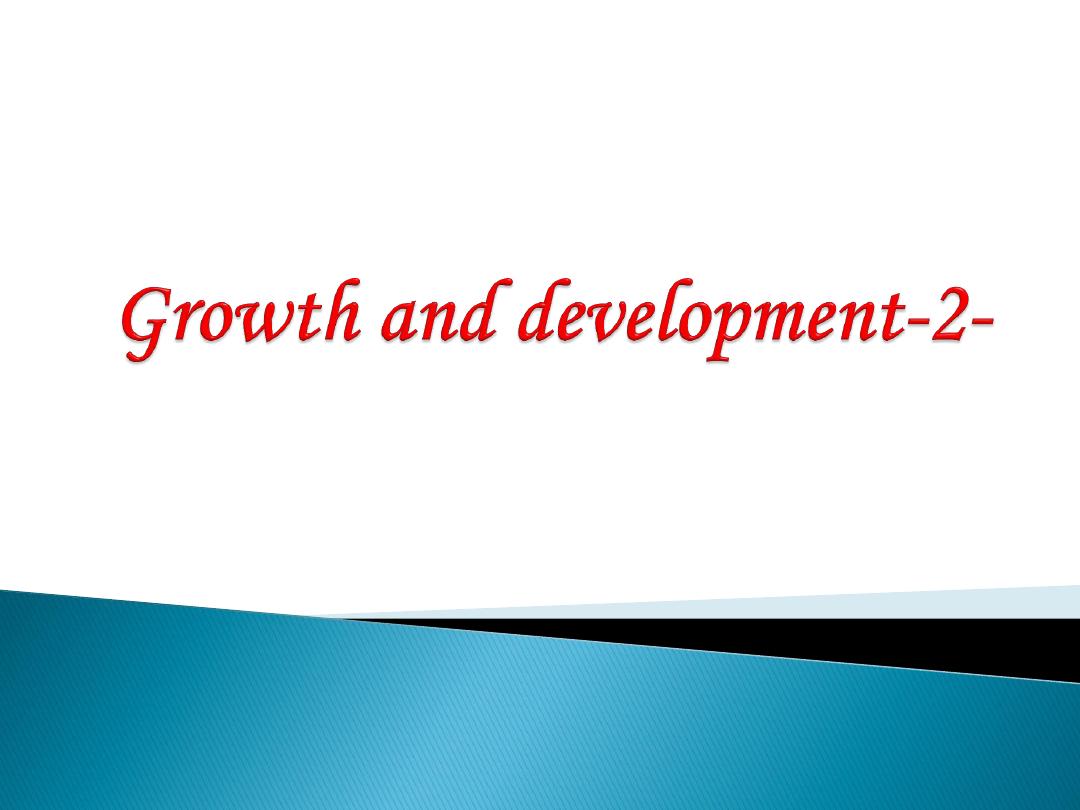
Dr.Noorjan A.M.
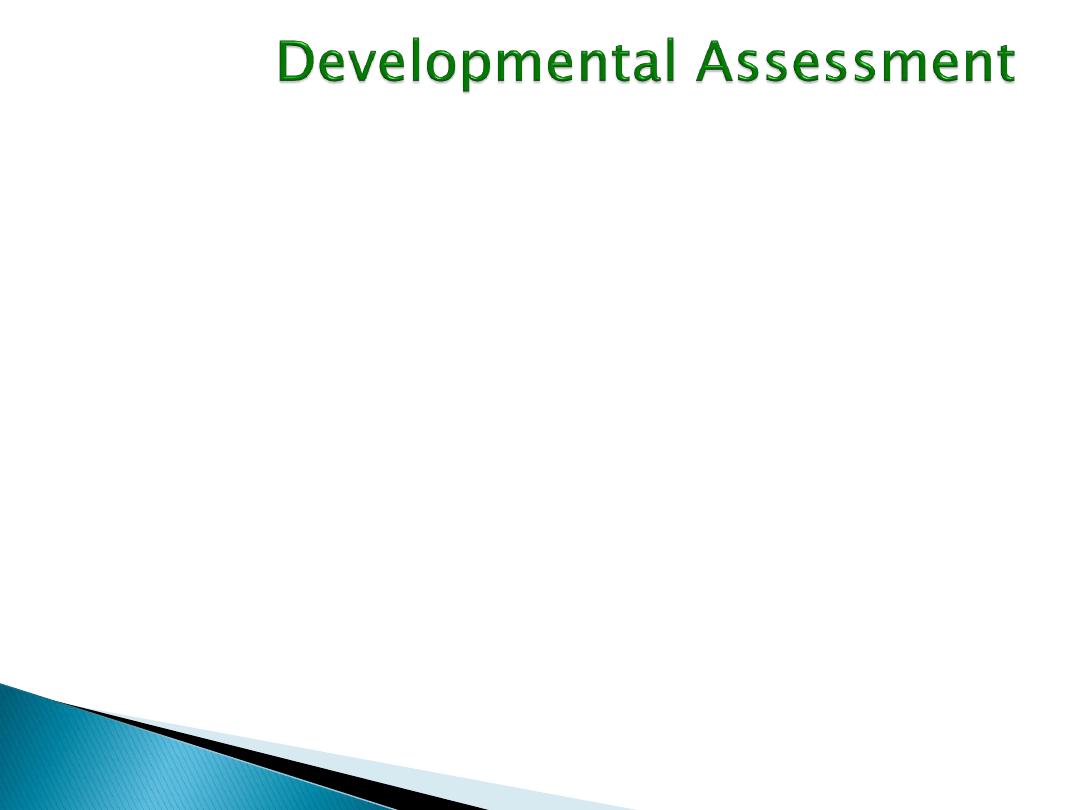
Development testing
is a routine part of
examination of any child especially infants and
young children.
The purpose
is to identify development delay
early. The developmental skills can be divided into
four main categories.
1.
postural and movement (gross motor )
2.
Vision and fine manipulation.
3.
Hearing and speech.
4.
Social behavior.
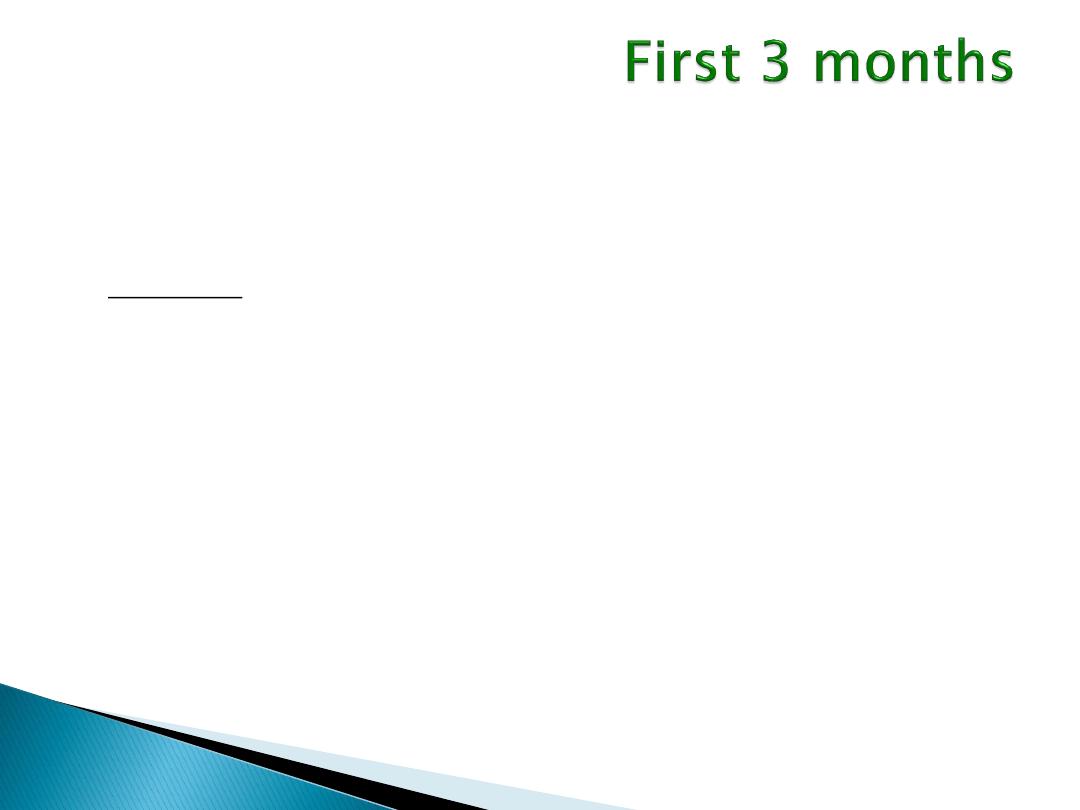
1.
posture and movement (gross motor) :-
The prone new born infant
By 1 month of age ,can raise the head briefly to the plain of body.
By 2 month the infant can sustain the head in that plane.
By 3 month the infant can raise the head above the plane and his
legs can be extended as well.
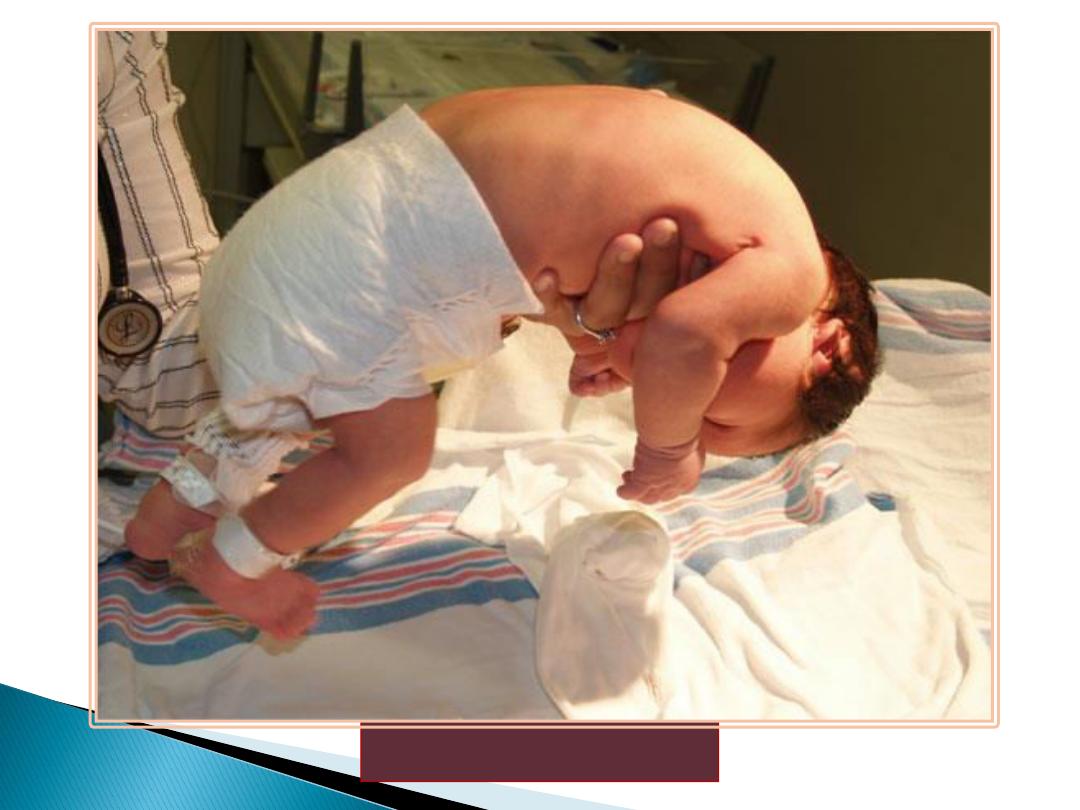
Ventral Suspension
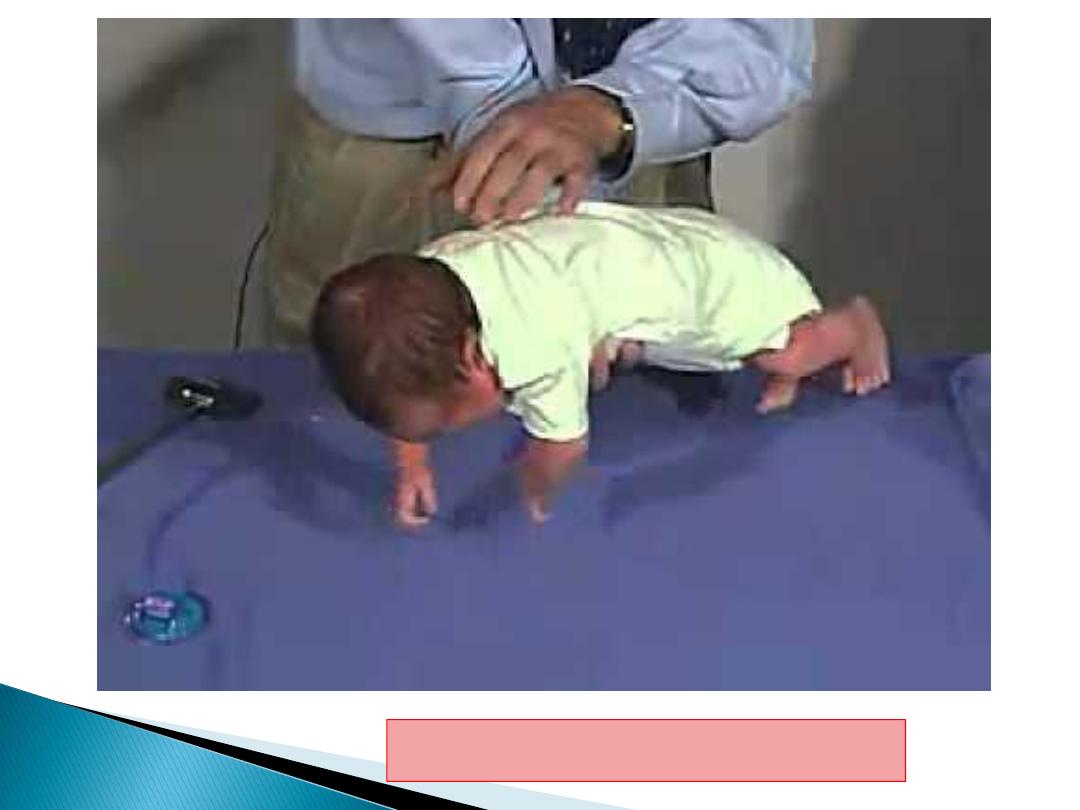
Ventral Suspension
8wks
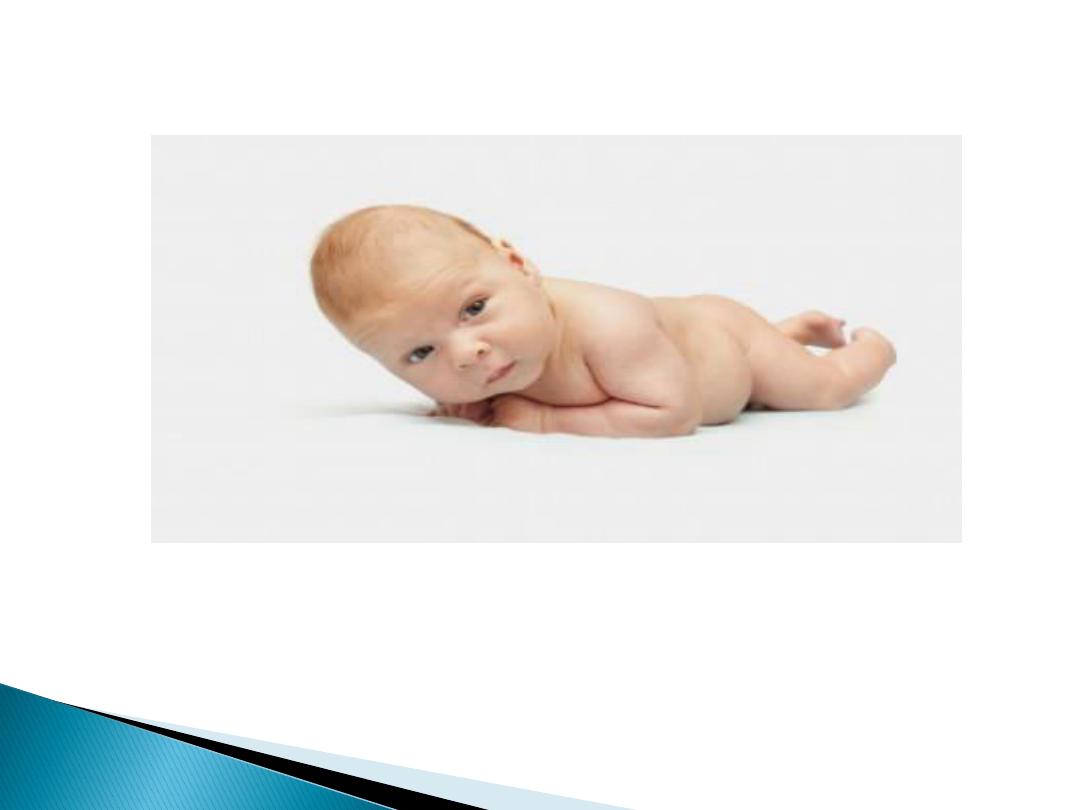
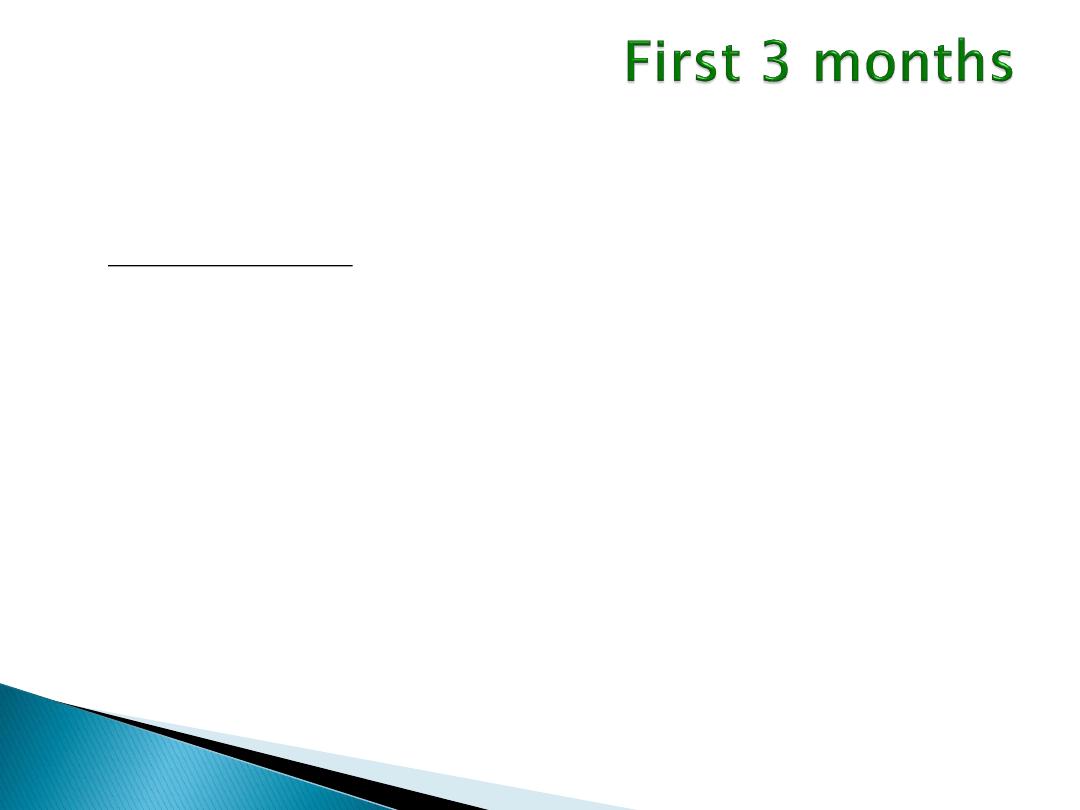
1.
posture and movement (gross motor) :-
In supine position;
Fulterm neonate lies with flexed upper & lower limbs.
at 4-8 week the head lags when the infant is pulled from supine to
sitting position and there is no head control.
By 12 week there is some head control.
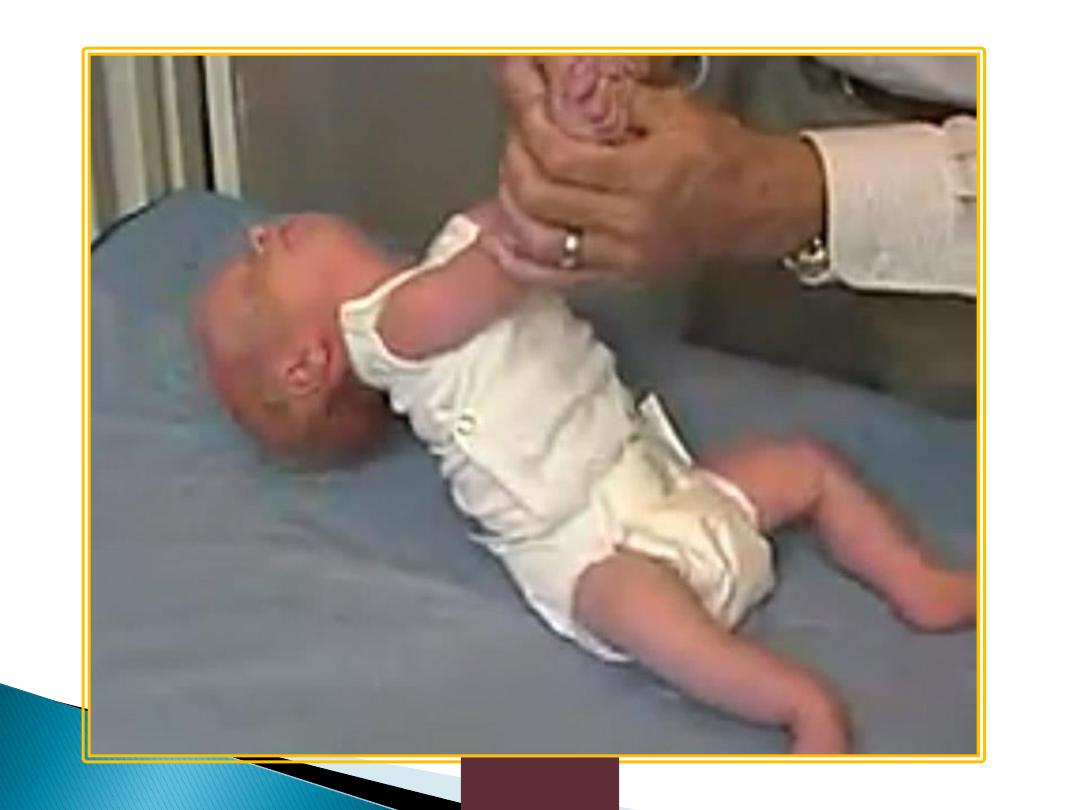
Head
Lag
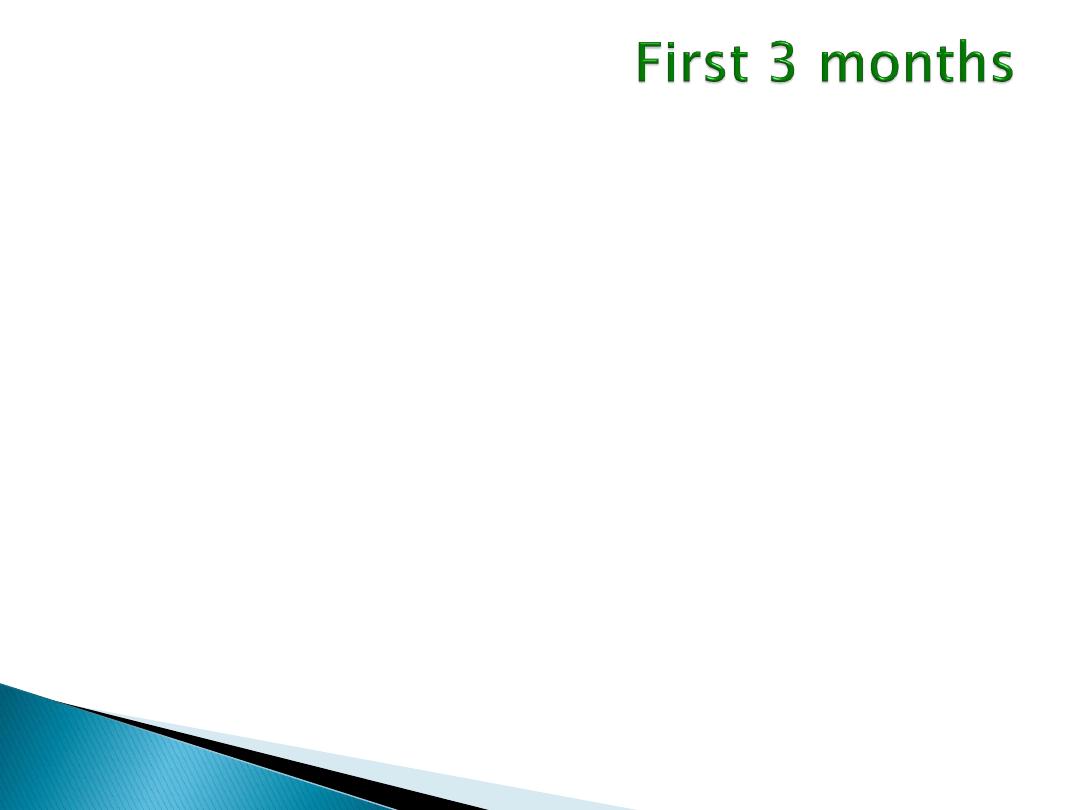
2.
Vision and fine manipulation:-
At first 4 week the infant fixate his eyes on face .
At end of 4 week the infant can watches persons and
follows moving object.
At 8 week the infant follows moving object 180 degree.
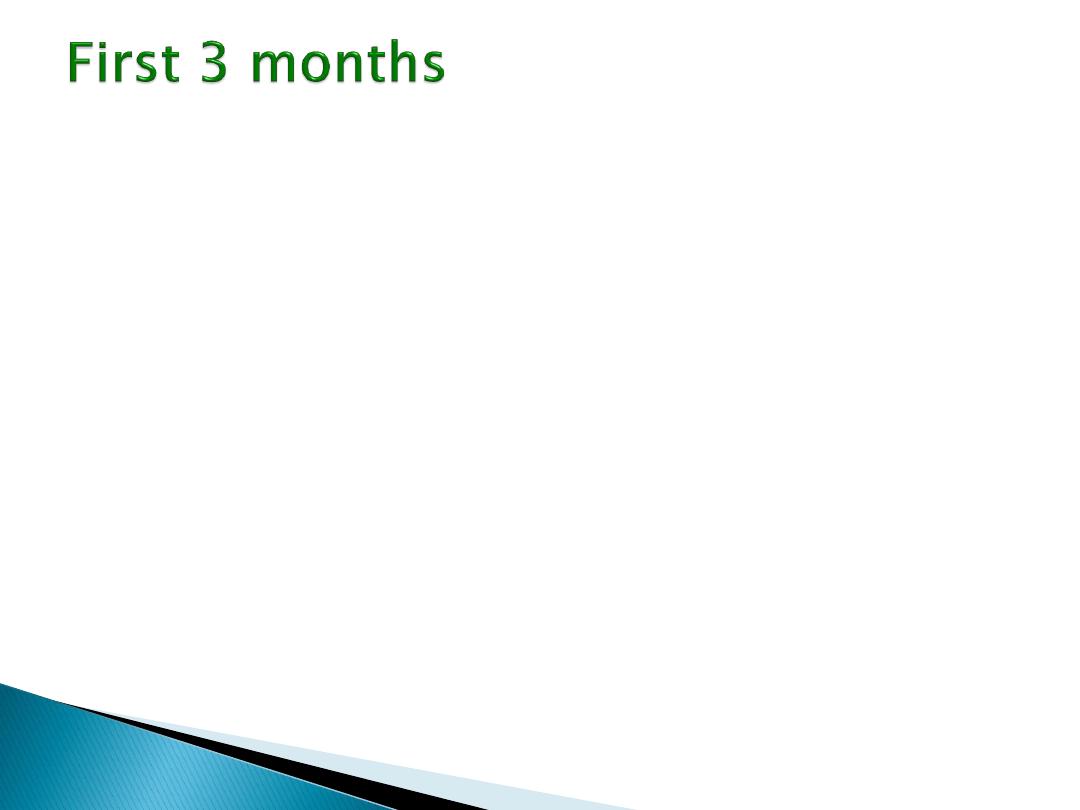
3.
Hearing and speech:-
When the infant hear a sound may quite, blink, or
startle or cry.
The infant
may coos (make noise) at 8 week of life.
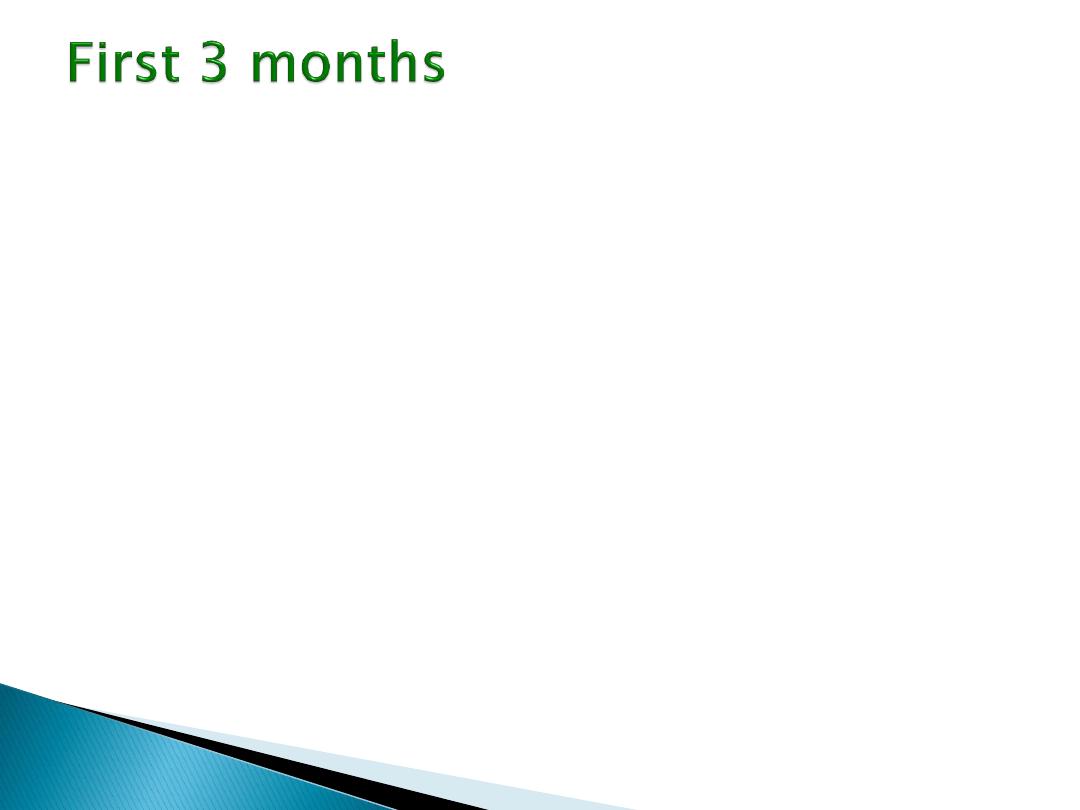
4.
Social behavior:-
Fragmentary smiles may manifest soon after birth, fully
developed
social smile
occur between 3-5 week.
Primitive reflexes: - at birth Moro reflex active, placing and
stepping reflex and grasp reflex also active
At 12 week Moro response disappeared.
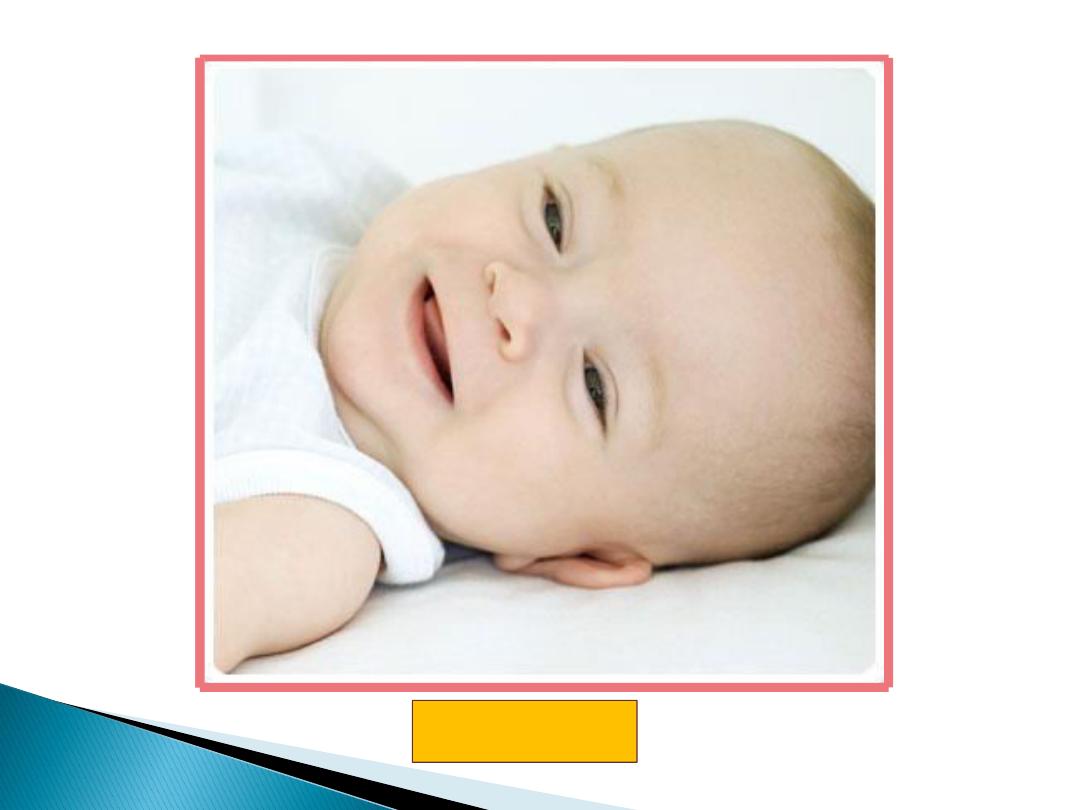
Social Smile
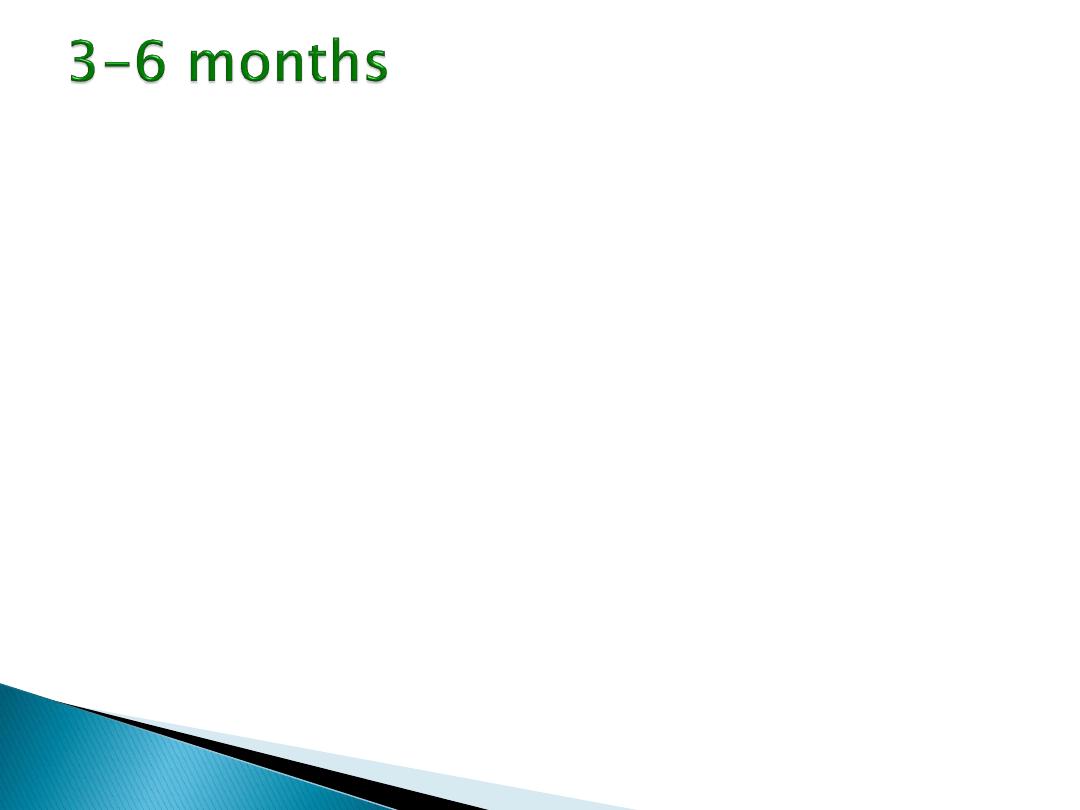
1.
posture and movement
By 4 month the head can be raised to vertical axis and turned easily
from side to side.
By 4 month
when the infant is pulled from supine to sitting position,
the head is held steady with out bobbing this means
good head
control.
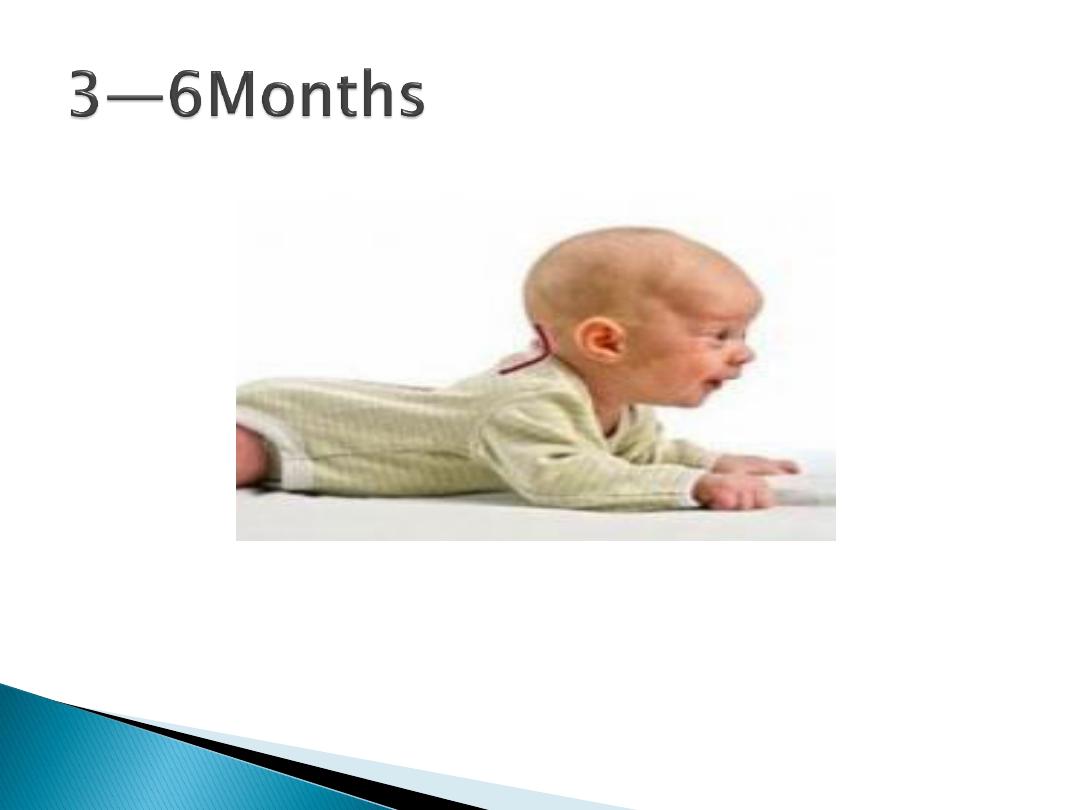
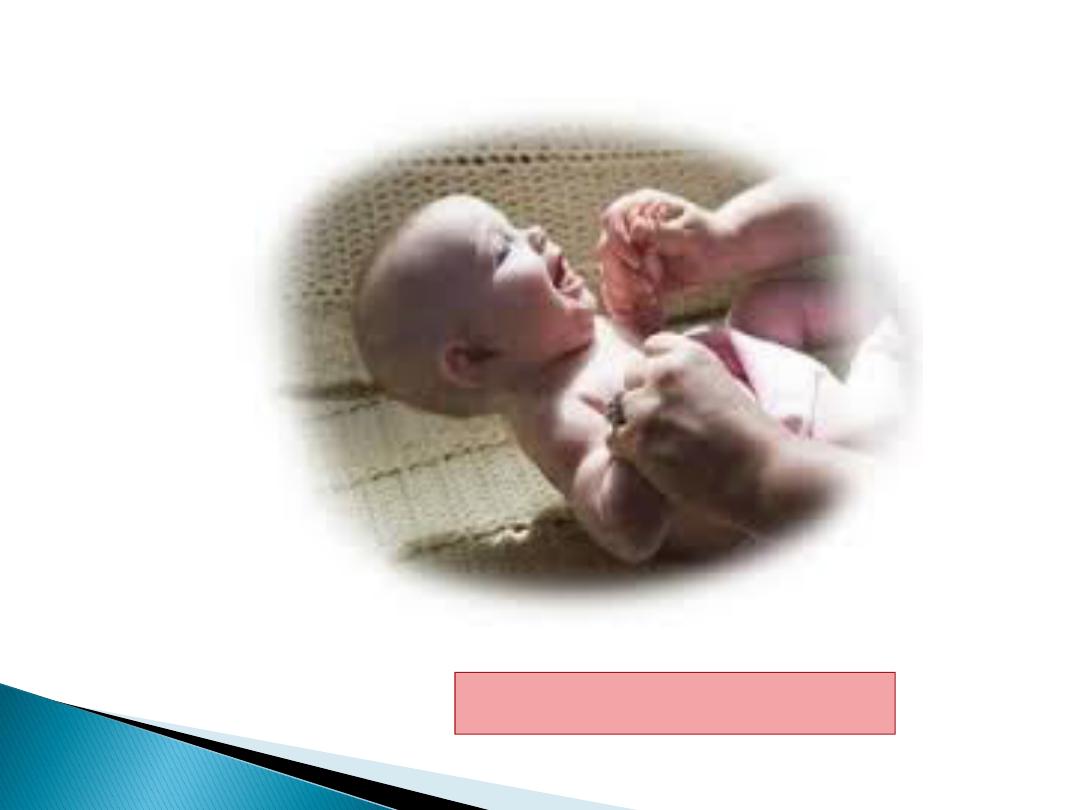
Head Control 16wks
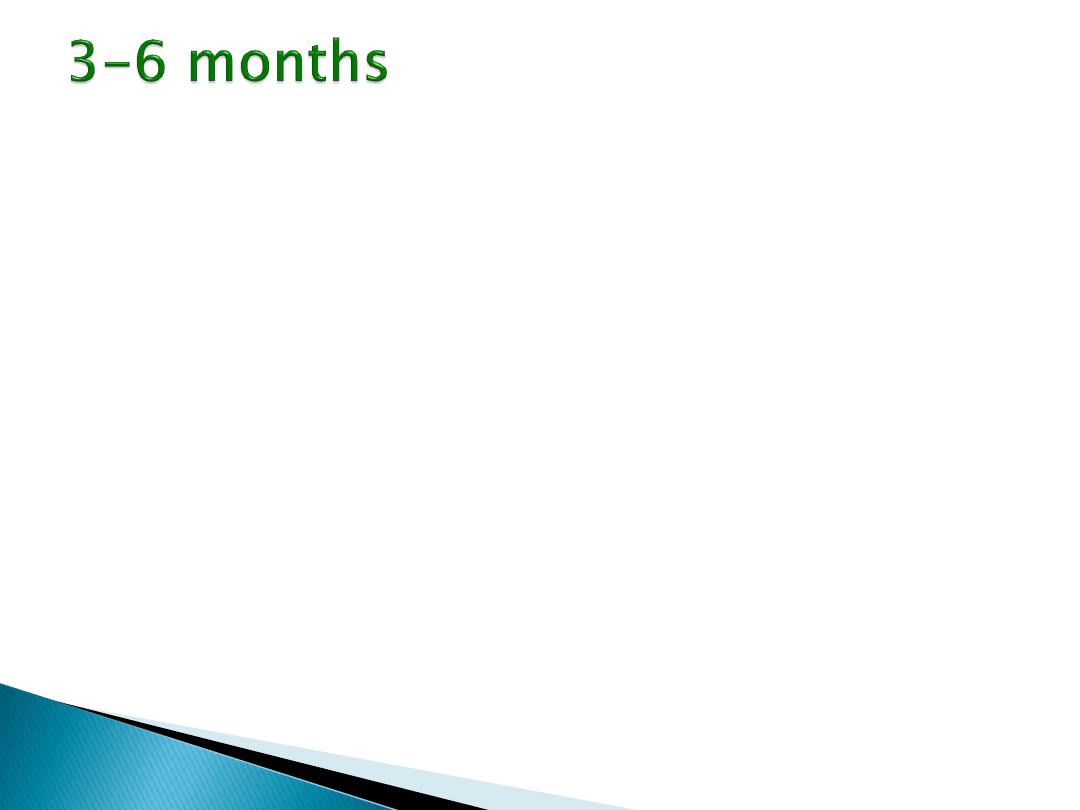
By 6 month infants usually sit for few minutes on firm surface such
as the floor with legs abducted and extended and hand for ward for
supporting.
At 5-6 month infant can rolls over
at first from prone to supine
position then after 1 month from supine to prone position. And he is
able to support his weight on the hands with extended arms.
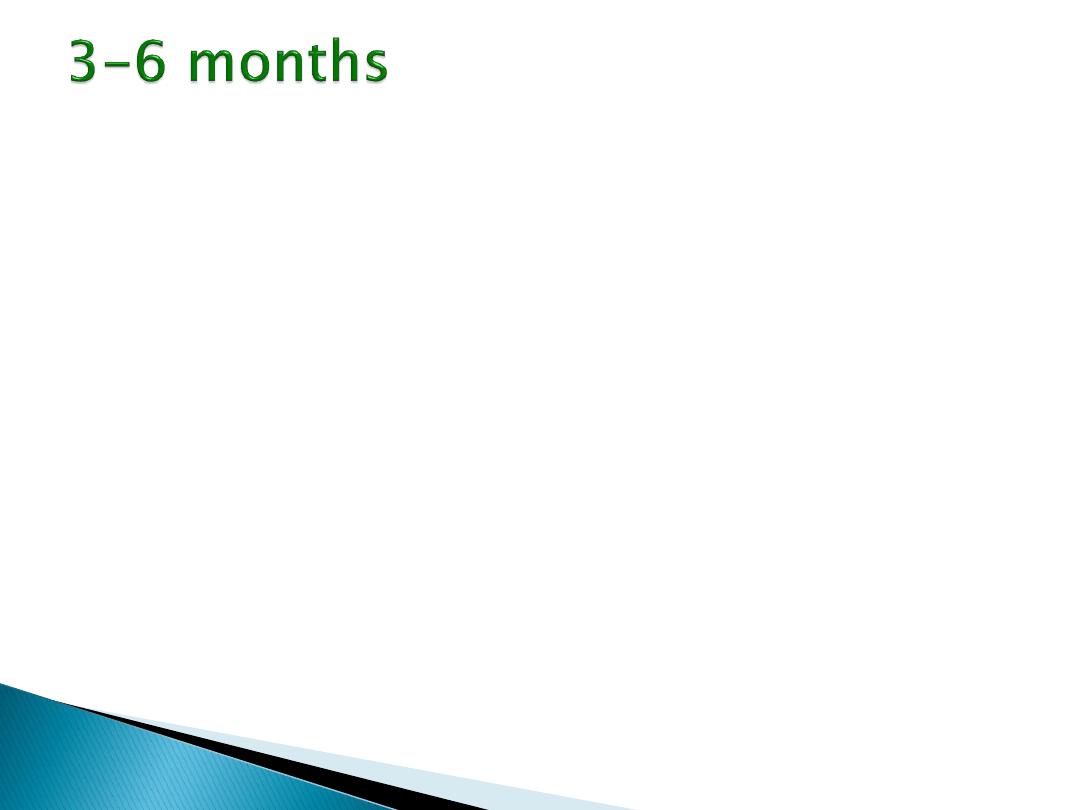
2.
Vision and fine manipulation;-
At 4 month infant
can make contact with objects
of moderate size, grasping them and bring them
to the mouth (palmer grasp)
At
6 month
most infant can grasp a large object
and transfer it from hand to hand.
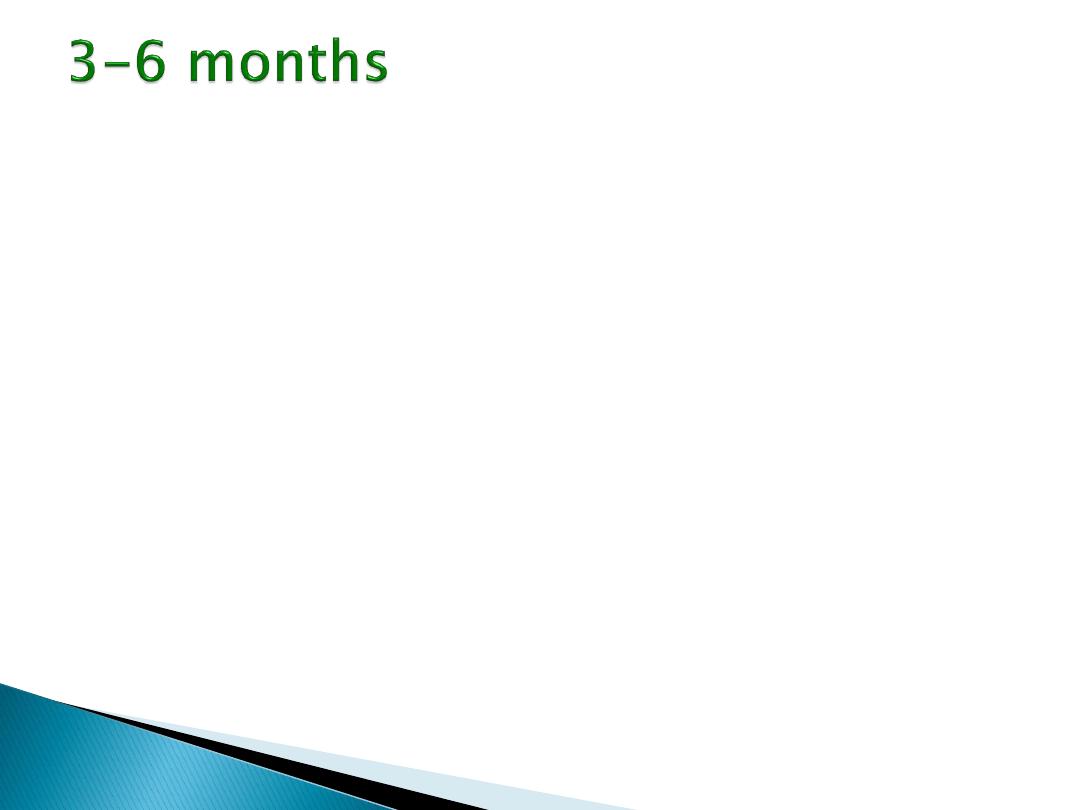
3.
Hearing and speech:-
At 6 month hearing is tested by a sound made at
45cm away from the ear but at the level of ear,
slightly behind him using high pitch sound.
At 6 month infant start babbling sounds.
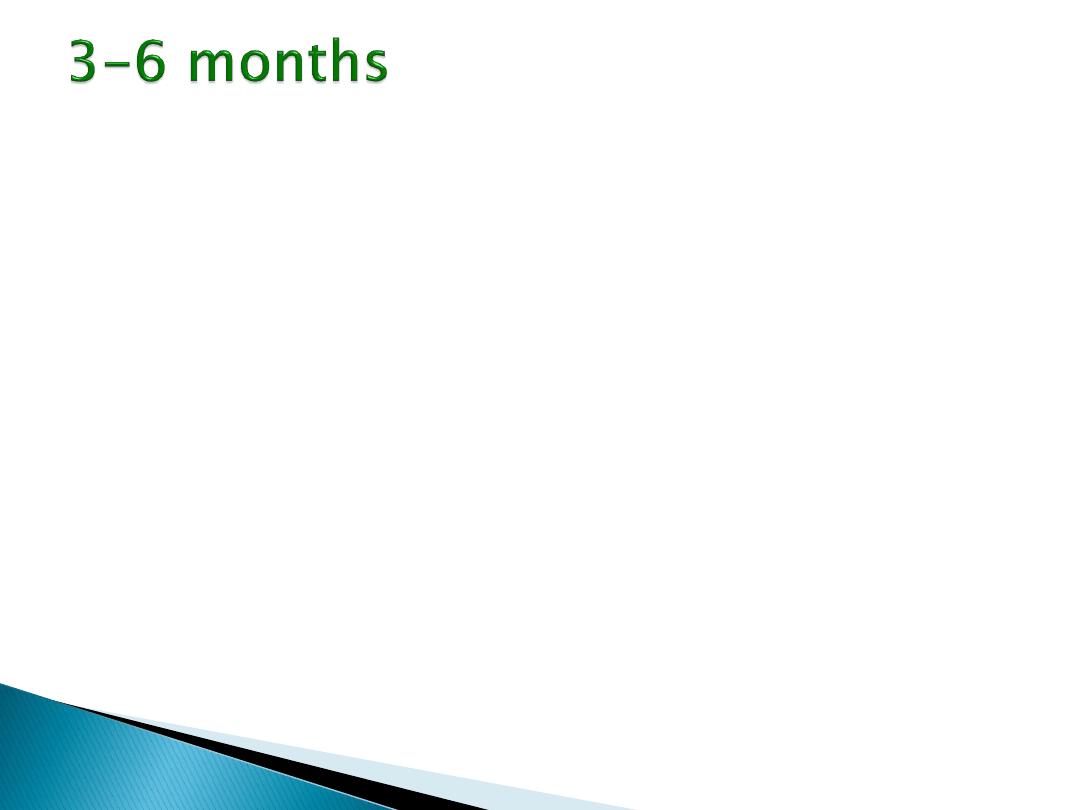
4.
Social behavior
At 4 month infants start laugh aloud at
pleasurable
social contact
and show displeasure
by changes of expression or crying.
At 6 month infants very excited when see food
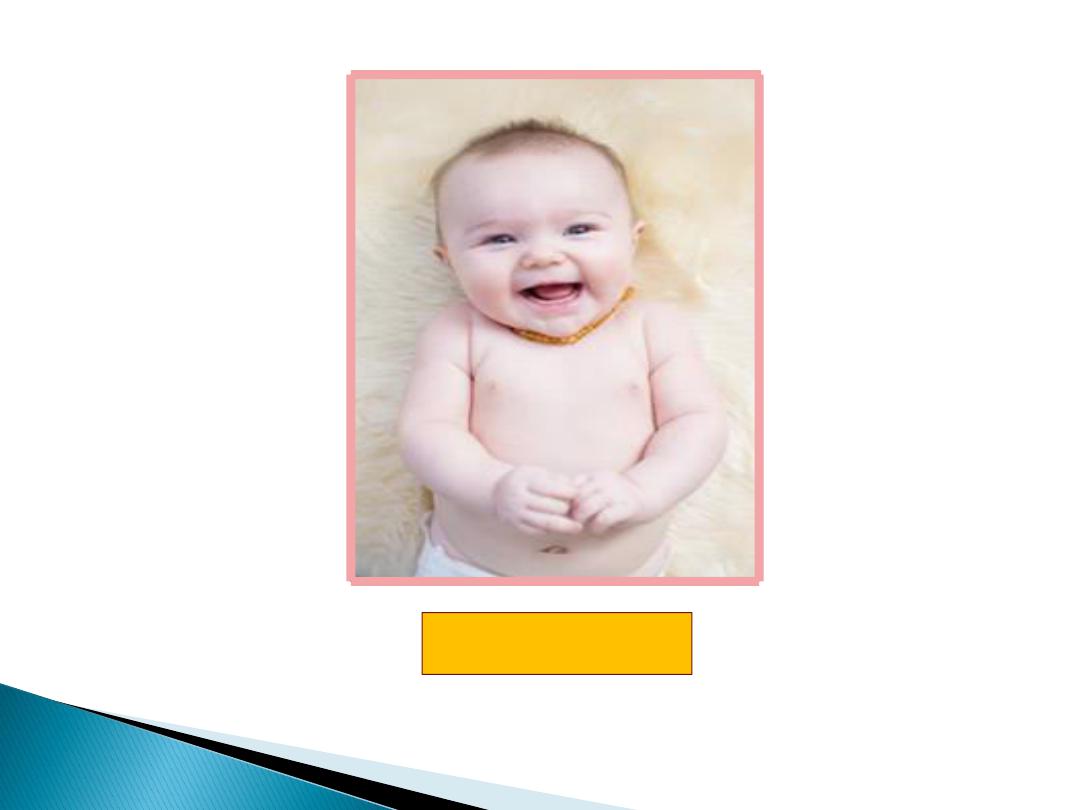
Laughing baby
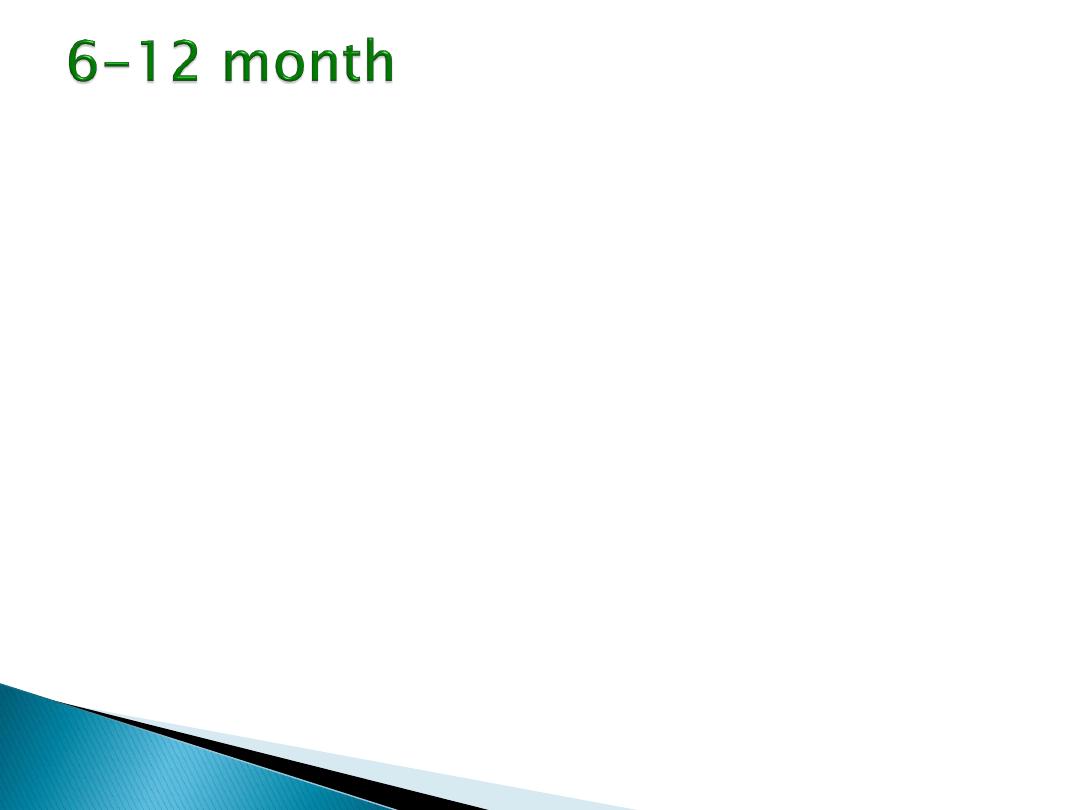
1.
posture and movement:-
At 7
month they can assume a
sitting position with support
.
Between 8-9 month they can assume a sitting position un
supported with back straight.
From 6 month the child starts to take weight on his legs.
At 9 month a child can able to stand steadily for a short time
as long as their hands are held.
.
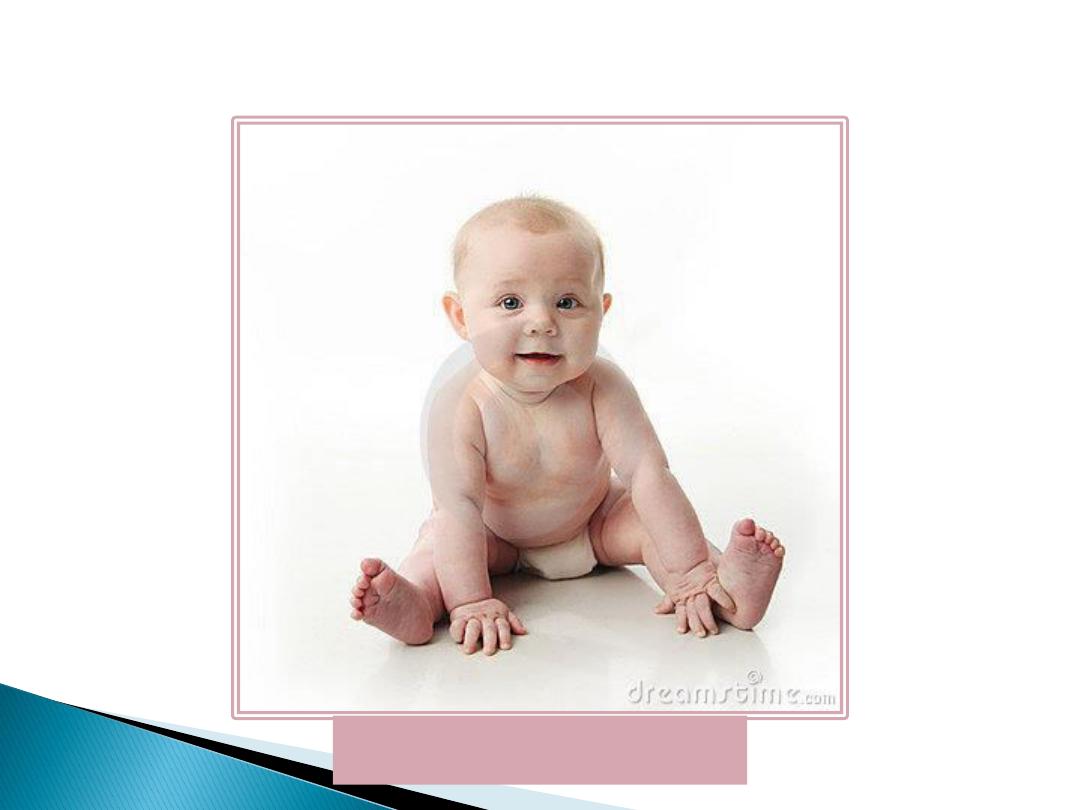
Sitting with Support
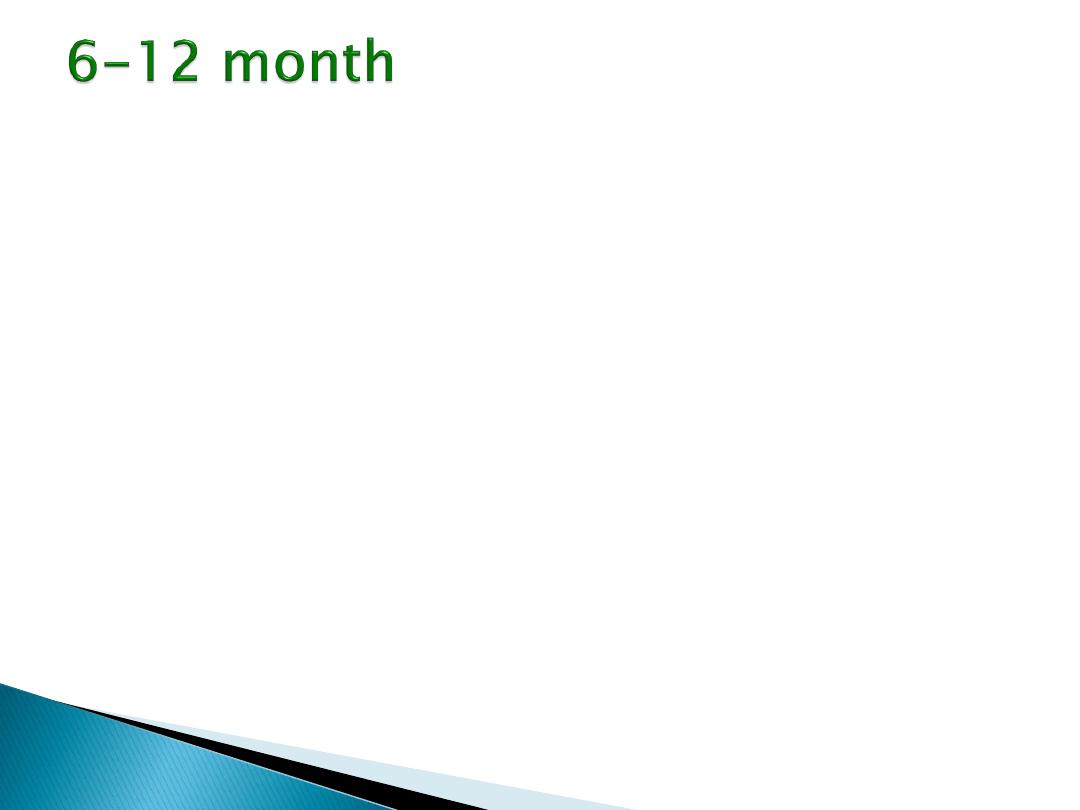
posture and movement:-
At 9-10 month start crawling
either on his hands and knee
or crawling on his abdomen on which the child pull himself
forward by his hands.
Some infants crawl by sitting on their buttocks this called
bottom shuffling.
At 12 months infant taken 10 steps supported.
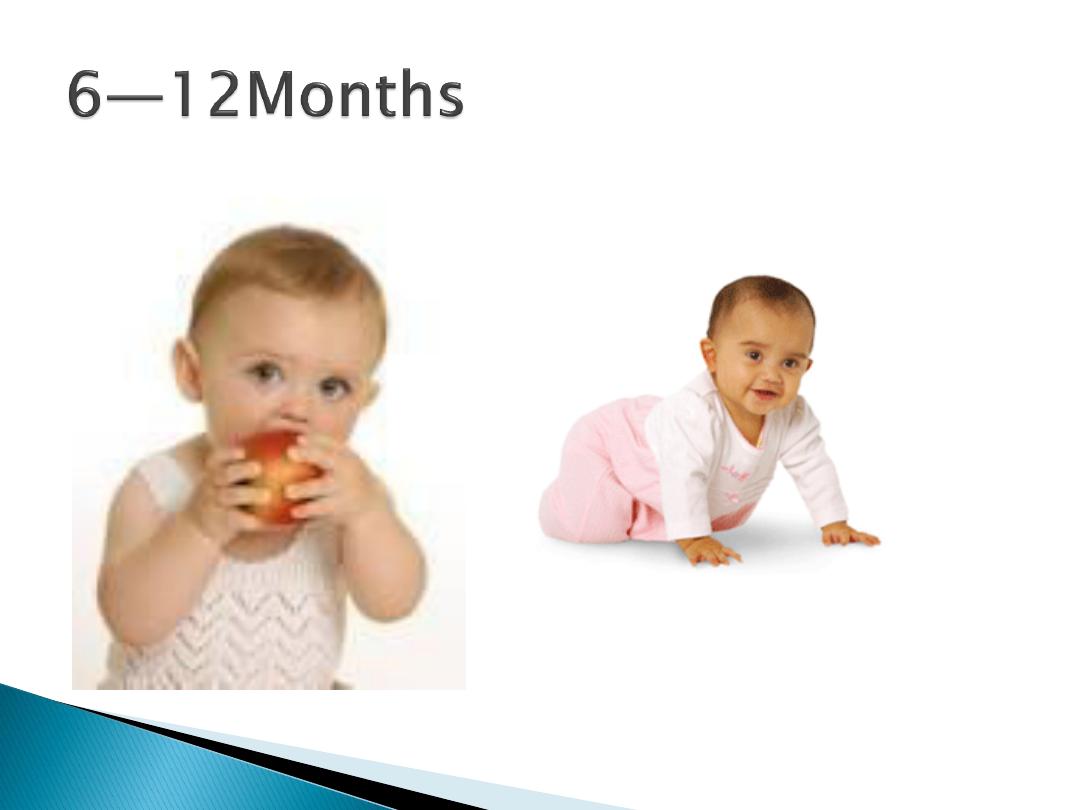
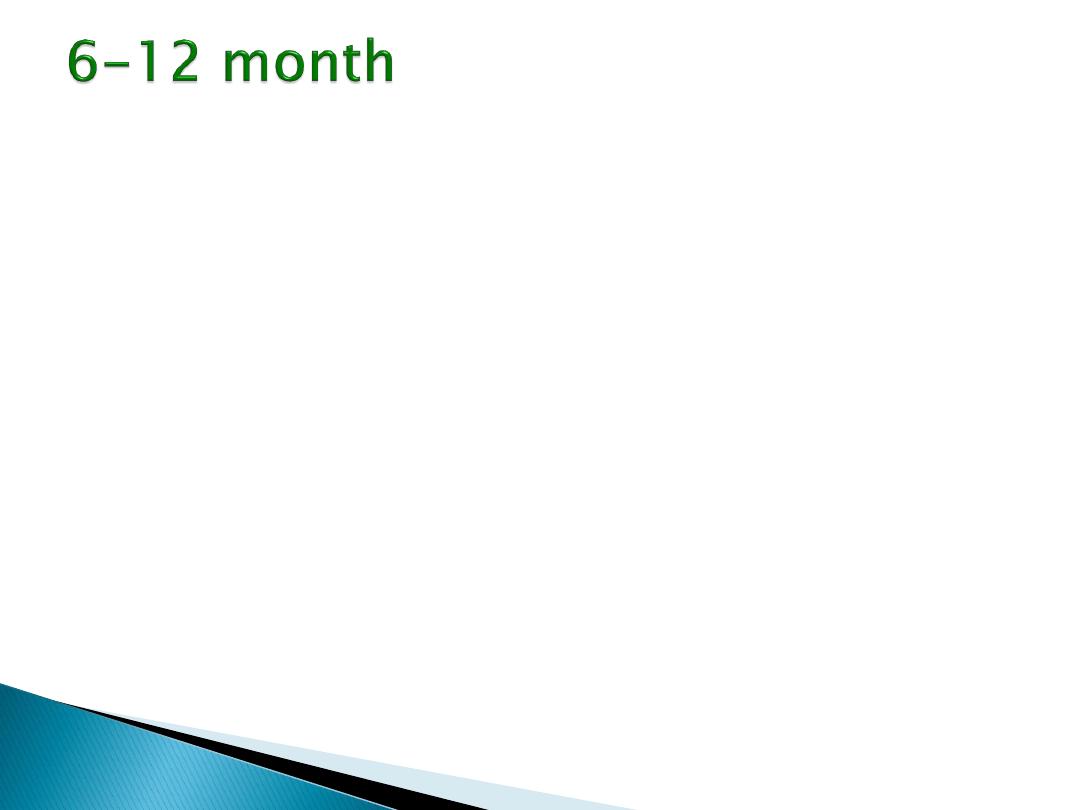
2.
Vision and fine manipulation:-
At 9-10 month they can club hands.
At 10 months they wave bye-bye.
At 12 month infant enjoy simple games with a toy such as
ball and can release object into offered hand.
At 12 month
he approaches the object with index finger
and picks it up precisely between the end of the thumb and
index finger this called (pincer grasp).
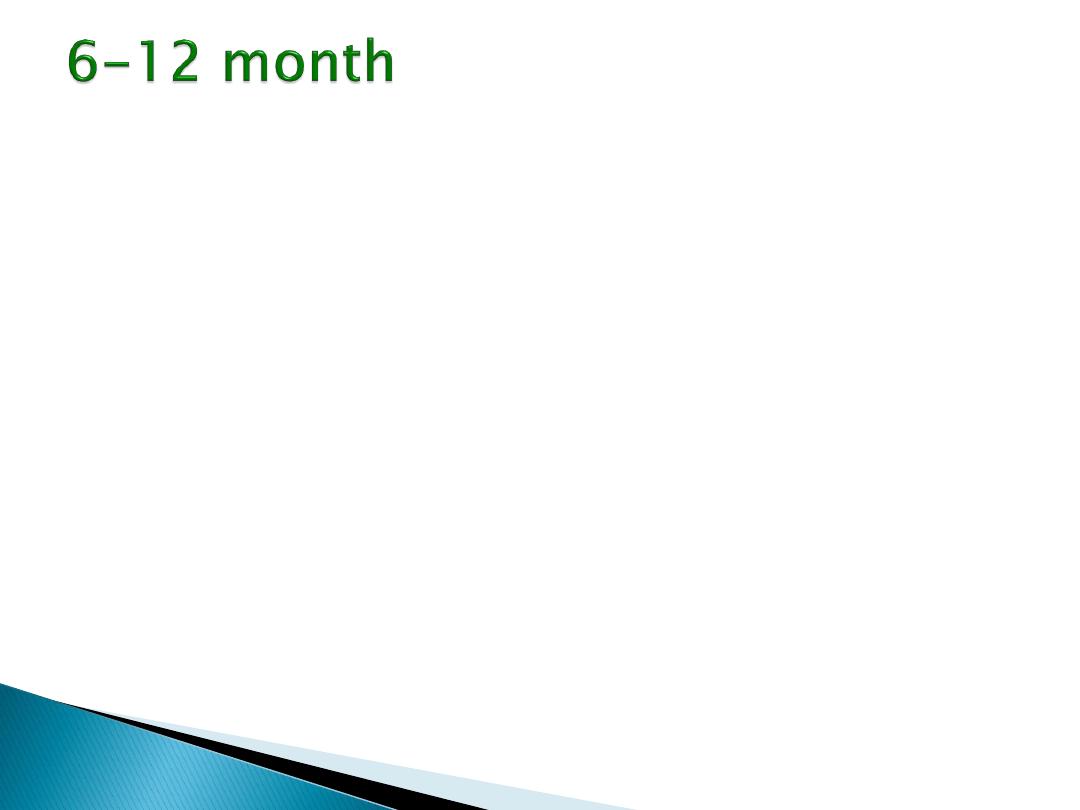
3.
Hearing and speech:-
At 8 month
the infant can make repetitive constant sounds (ba-ba, ma-ma,
and da-da).
At 9-10 month
the infant can make sounds he say
(mama, dada)
The optimal age at which to test hearing is 9 month.
At 12 month the infant turn to sound 90 cm vertically above his head.
At 12month the infant can make single word like mum, dog..
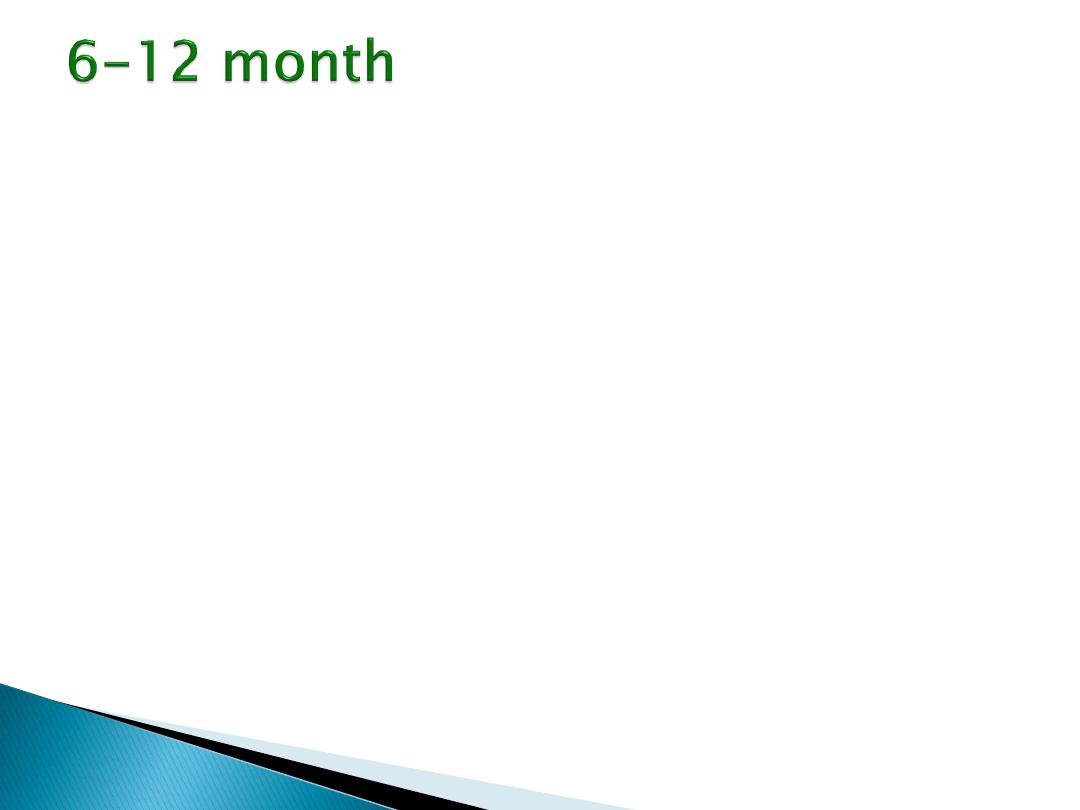
4.
Social behavior
Between 6-8 month infants develop anxiety on separation from regular
caretaker.
At 9-10 months infant starts to respond to sound of name.
.
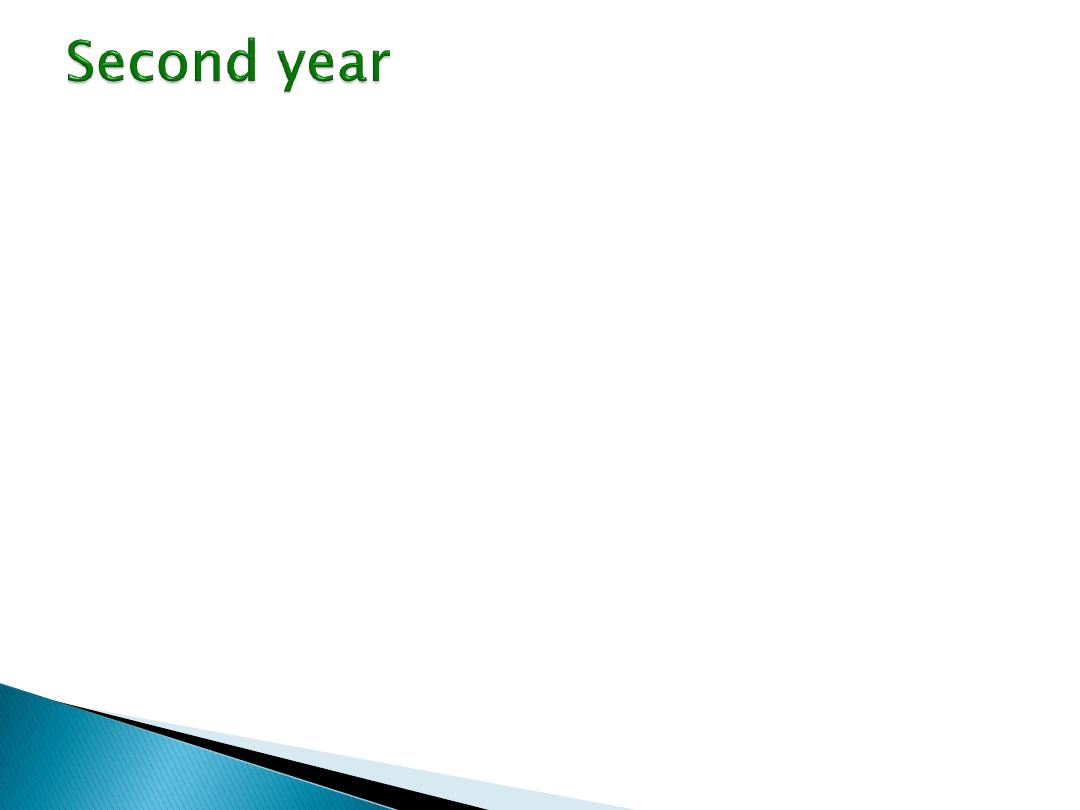
1.
posture and movement;-
At 15 month the infant can walk alone and
crawls up stairs.
At 18 month they can run stiffly and can
climb up stairs with one hand is held.
At 20 month they can go down stairs with
one hand is held.
At 24 month they can run well, walks up and
down stairs and they can jump.
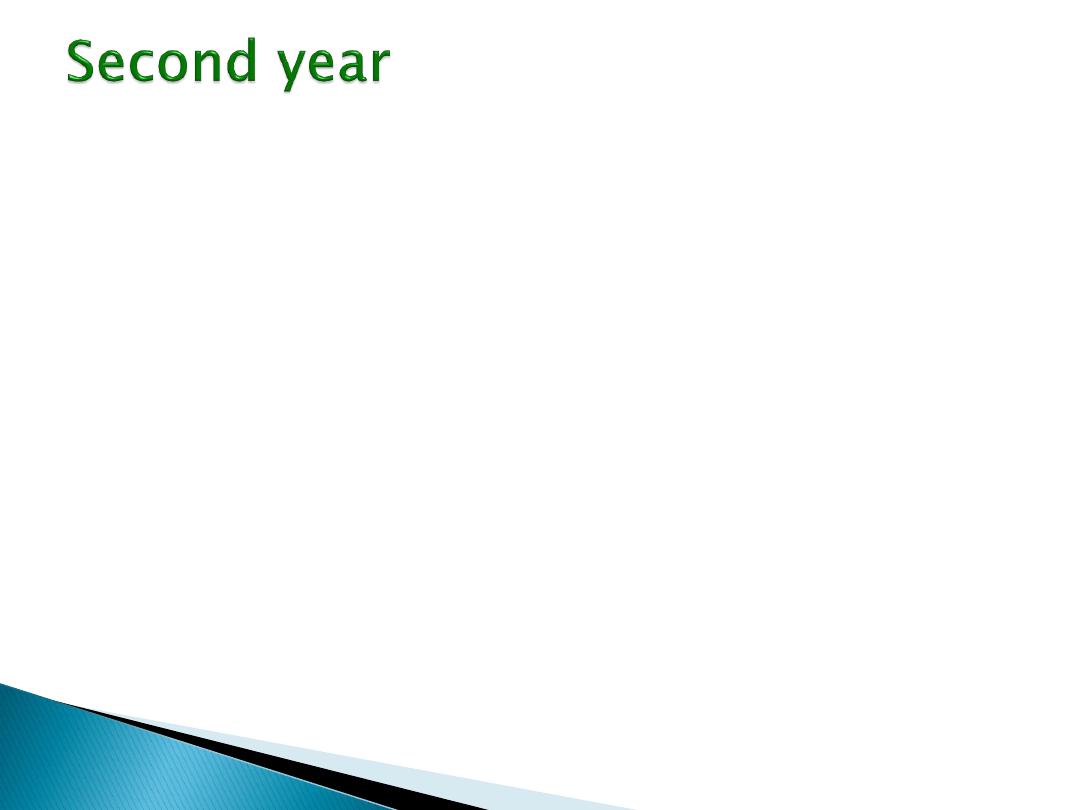
2.
Vision and manipulation:-
At 15 month the child can place a pellet into a small bottle
and can put 3 cubes on top of another.
At 18 month the child can dump the pellet from bottle and
can build a tower of 3-4 cubes, he can imitates scribbling,
imitate vertical stroke.
At 24 month the child can build a tower of 6-8 cubes.
At 24 month
the infant can do circular scribbling, imitate
horizontal stroke, folds paper once imitatively.
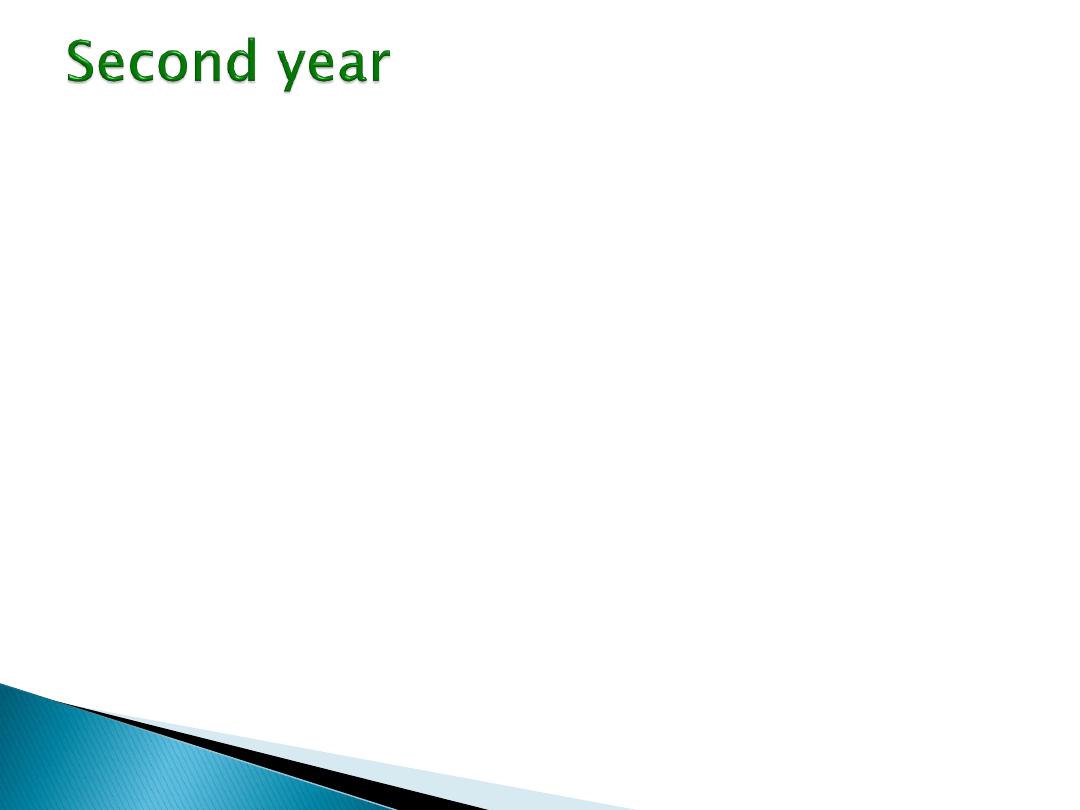
3.
Hearing and speech;-
At age of 15 months the child follows simple
commands and respond to his name.
At 18 month the child can speak 10 words
(average). name pictures, identifies one or more
parts of body.
At 2 years he can puts 3 words together (subject,
verb, and object)
Hearing is tested 90 cm out of his sight at a level
of the ear
At 2 years he can identify at least 4 parts of his
body.
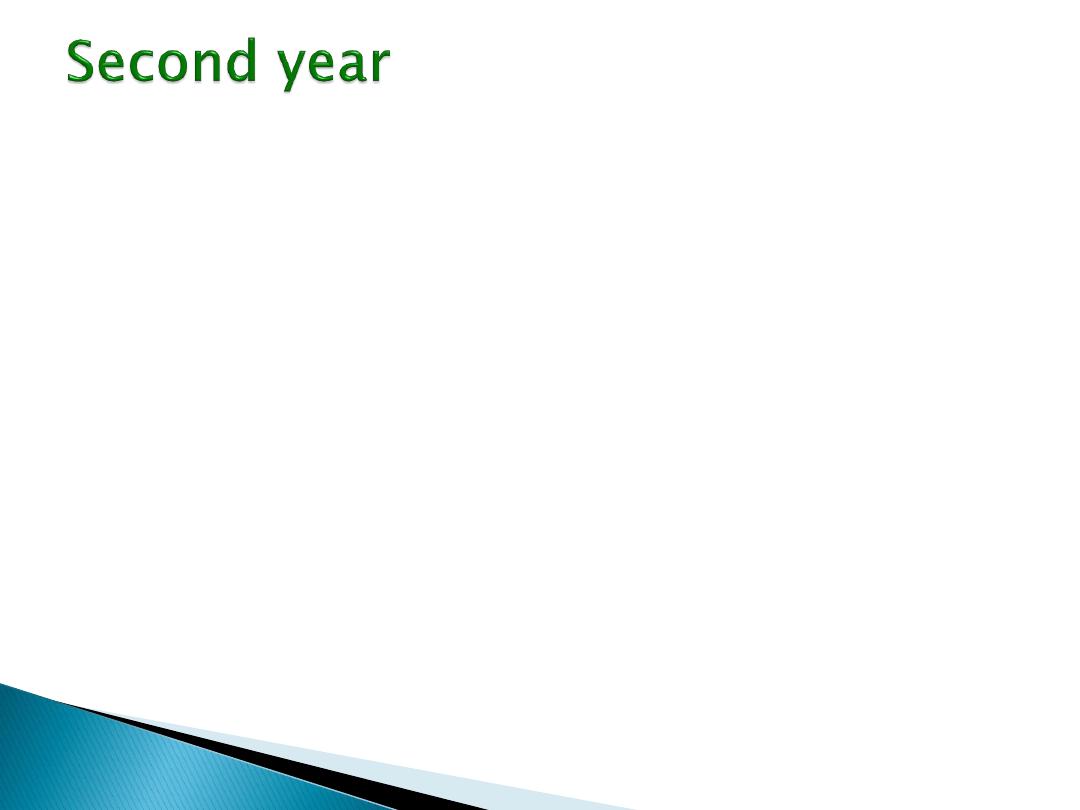
4.
Social behavior:-
At 18 month the child cooperates with feeding and
drinks from an ordinary cup using 2 hands.
At 2 years he handles the spoon well.
Until the end of 2 years, the play usually solitary.
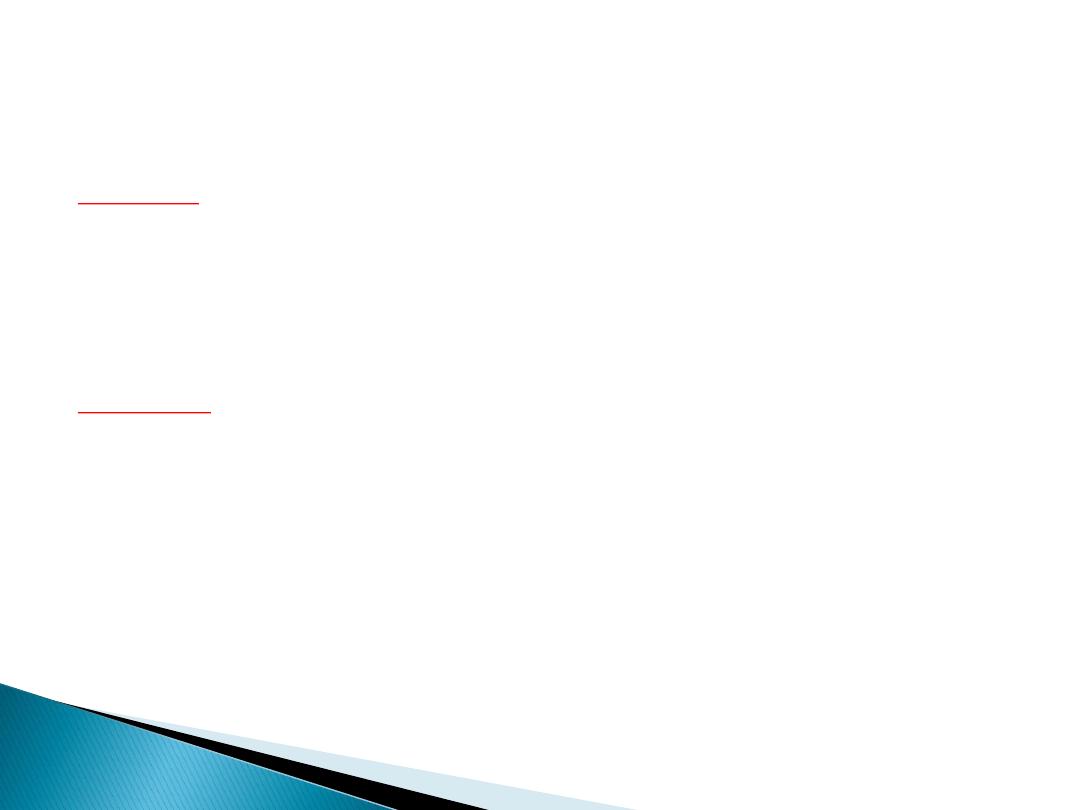
0-3month
Some head control
Fixate his eyes on face
Coos
Social smile
3-6months
Good head control
Roll over
Sit with support few minute
Palmar grasp
babbling
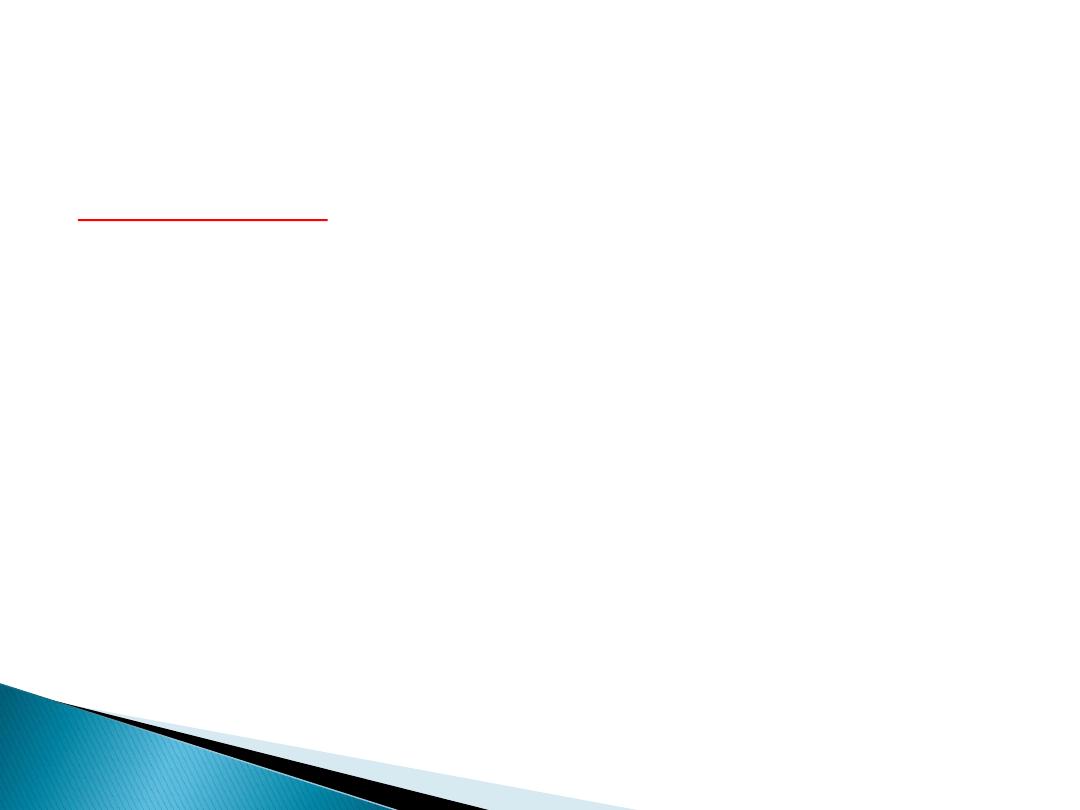
6-12months
Laugh
Sit without support
Crawling
Pincer grasp
Wave bye-bye
Club
Ba-ma-
da……baba-mama
Anexity on seperation
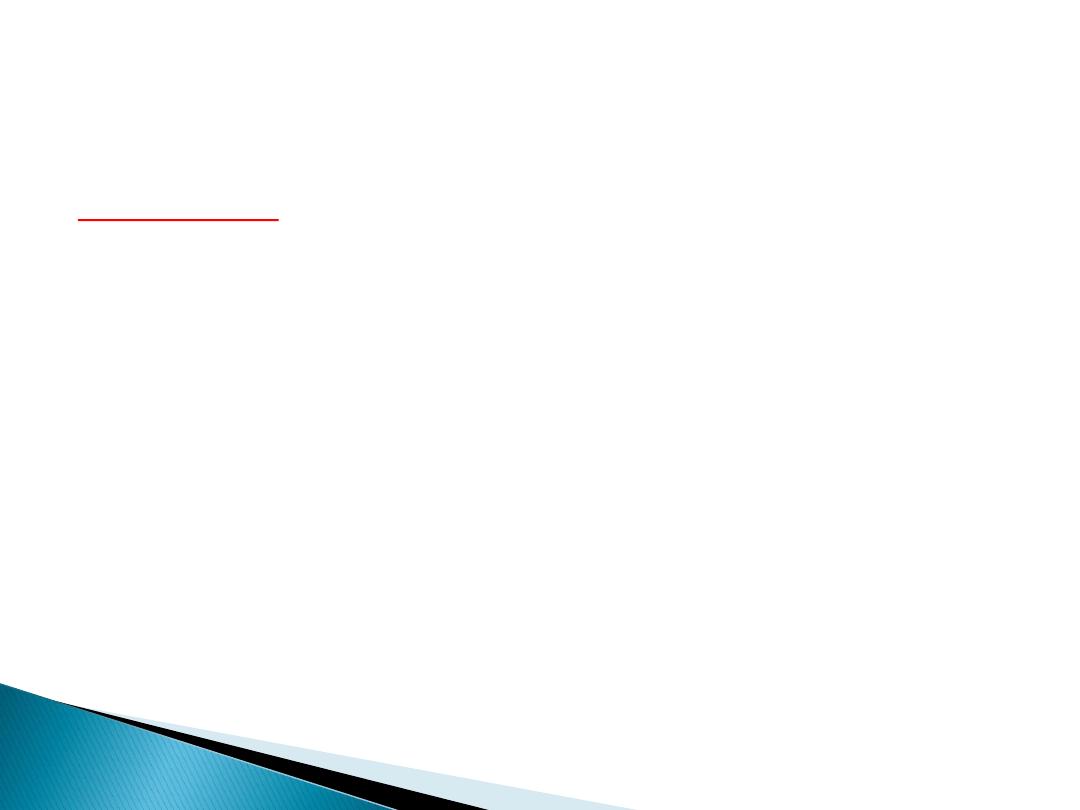
15months
Walk alone
Crawls upstair
Put 3cubes
Respond to his name
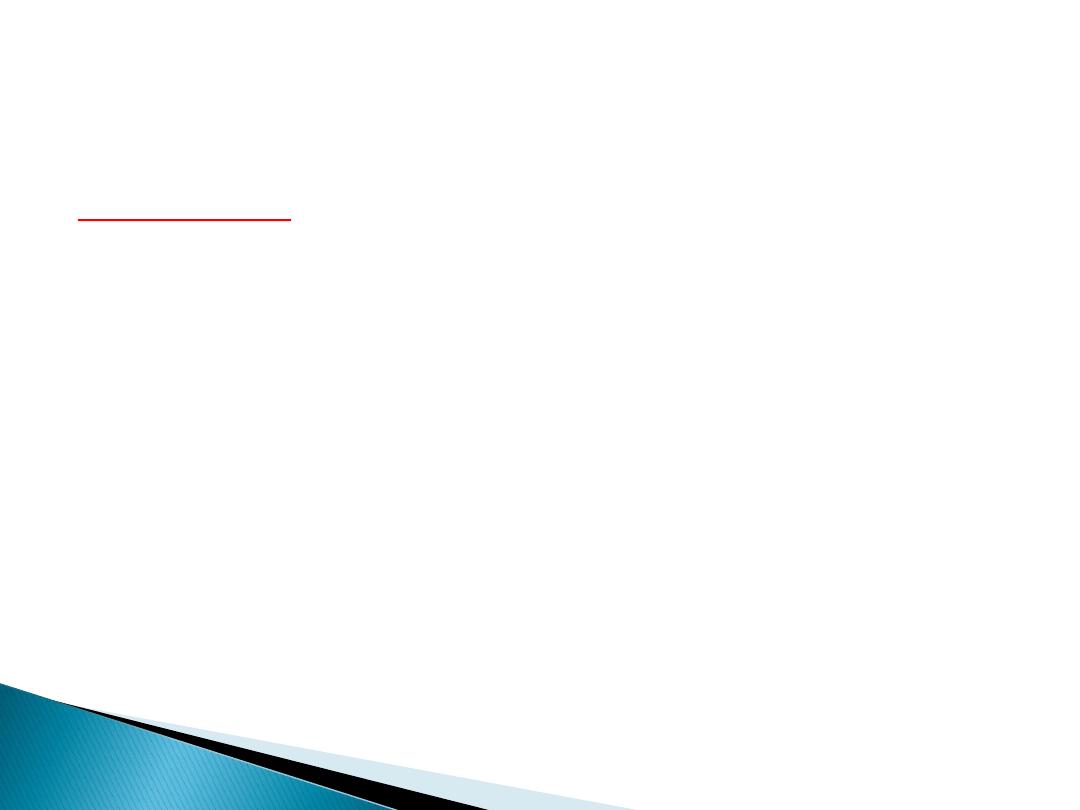
18 months
Run stiffly
Climb upstair with one hand is held
Build up3 cubes
Scribbling
Speak 10 words
Cup feeding
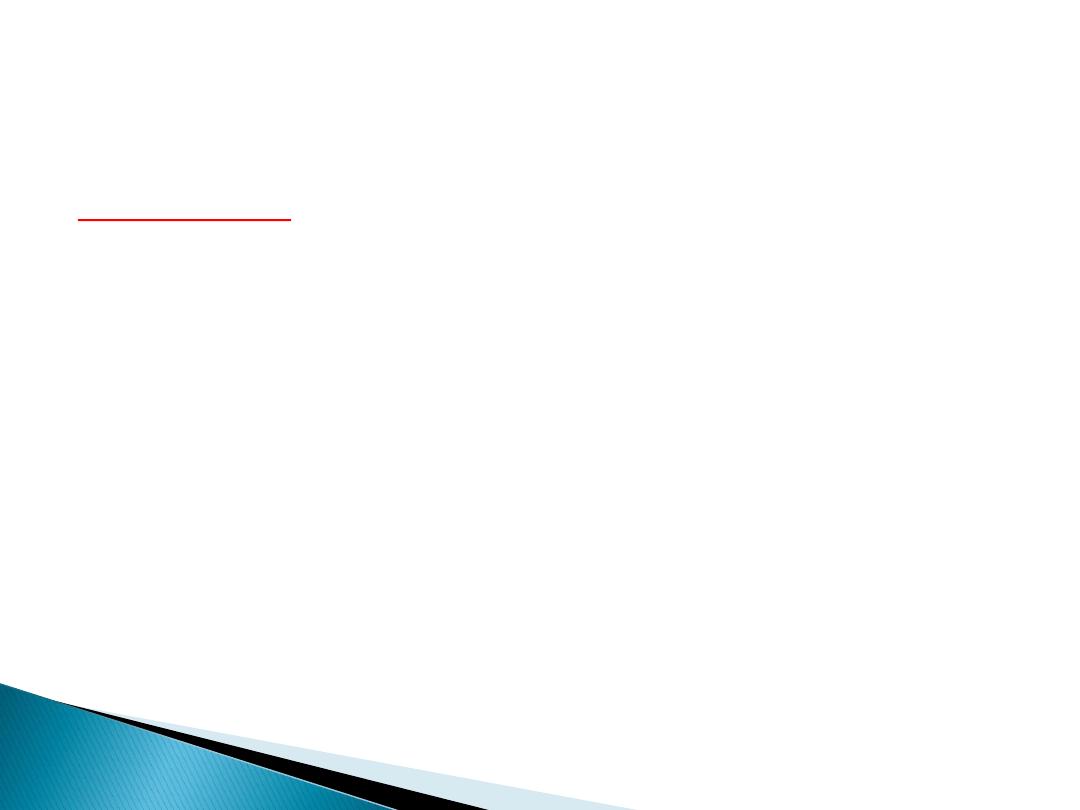
24 months
Run well
Wake up&down stair
Jump
Build up 6-8 cubes
Circular scribbling
Put 3 words together
Identify 4 parts of his body
Play solitary
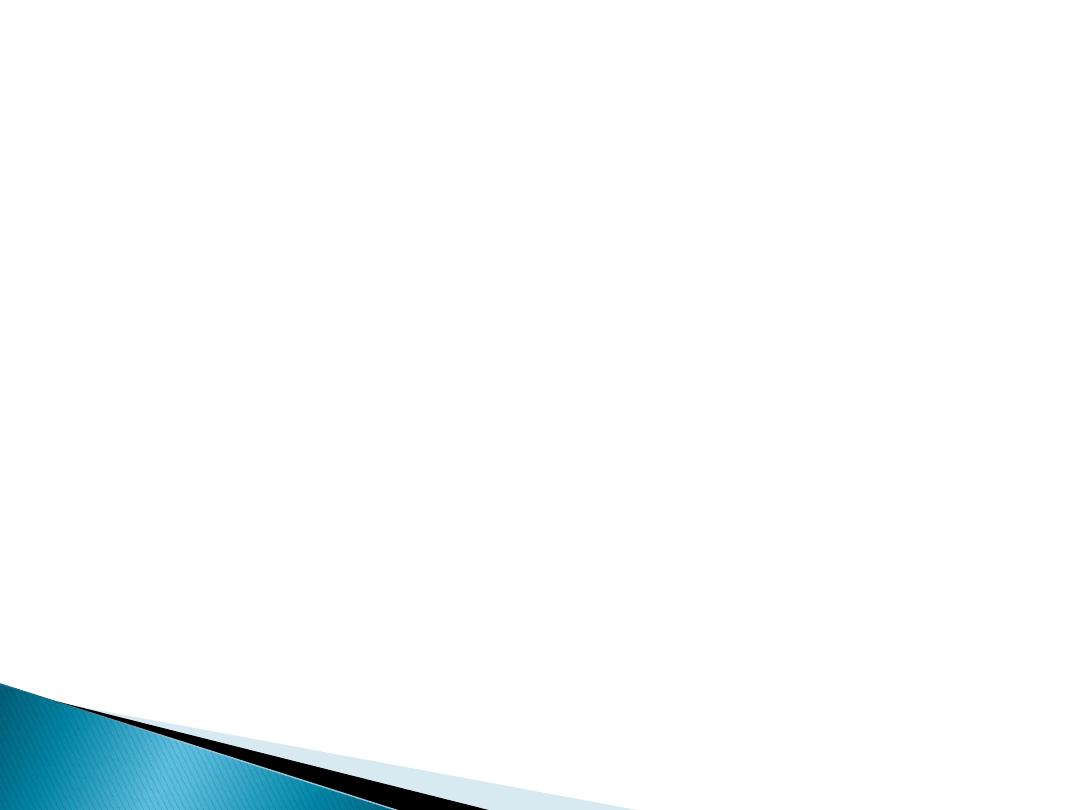
Thank You
